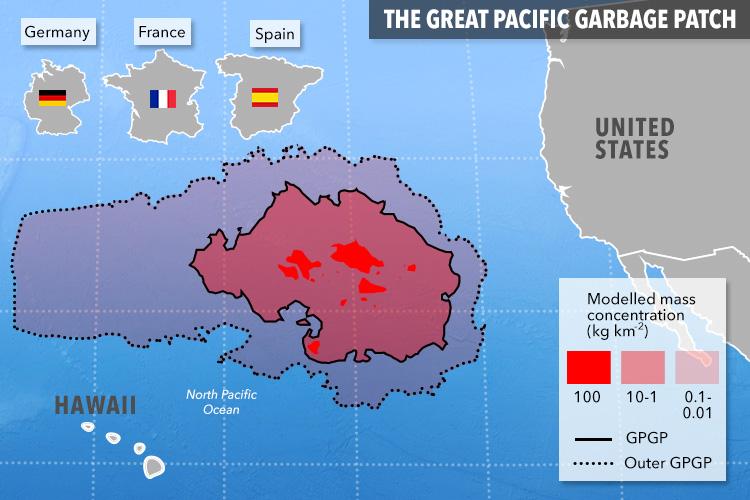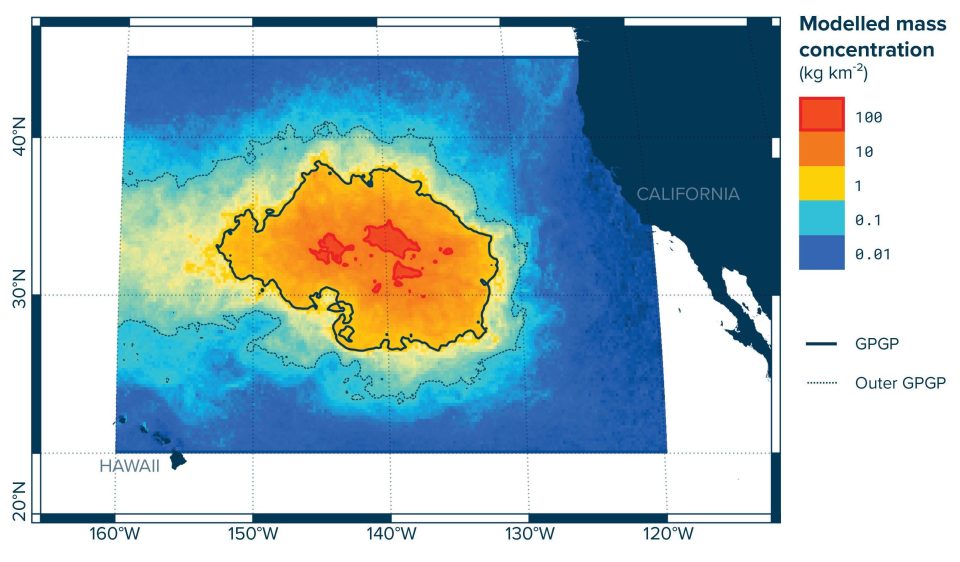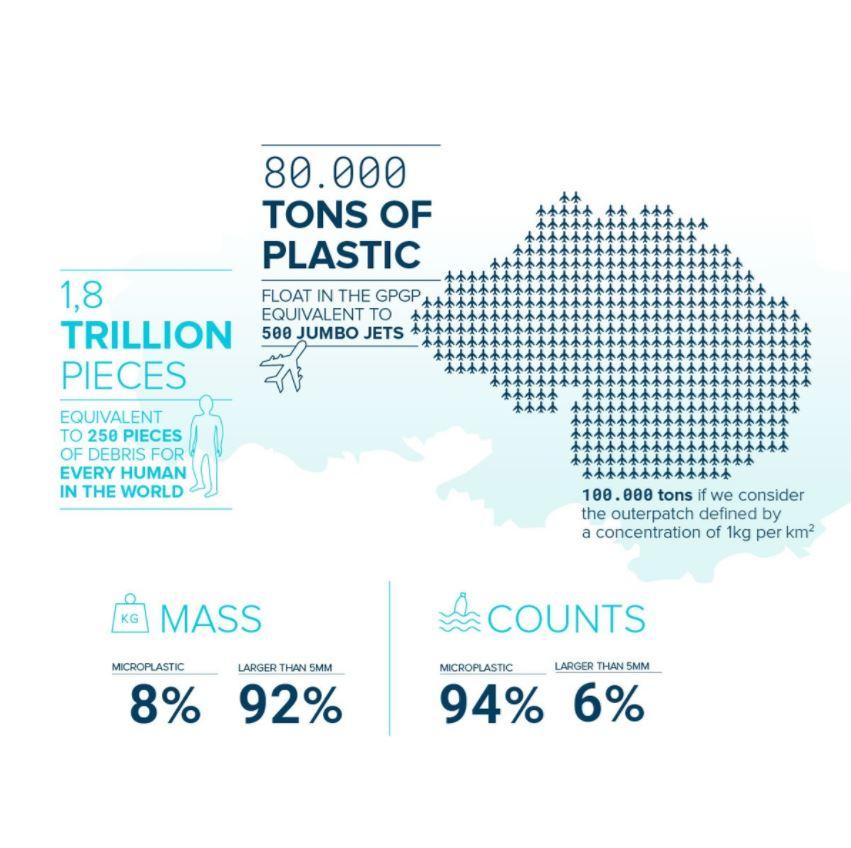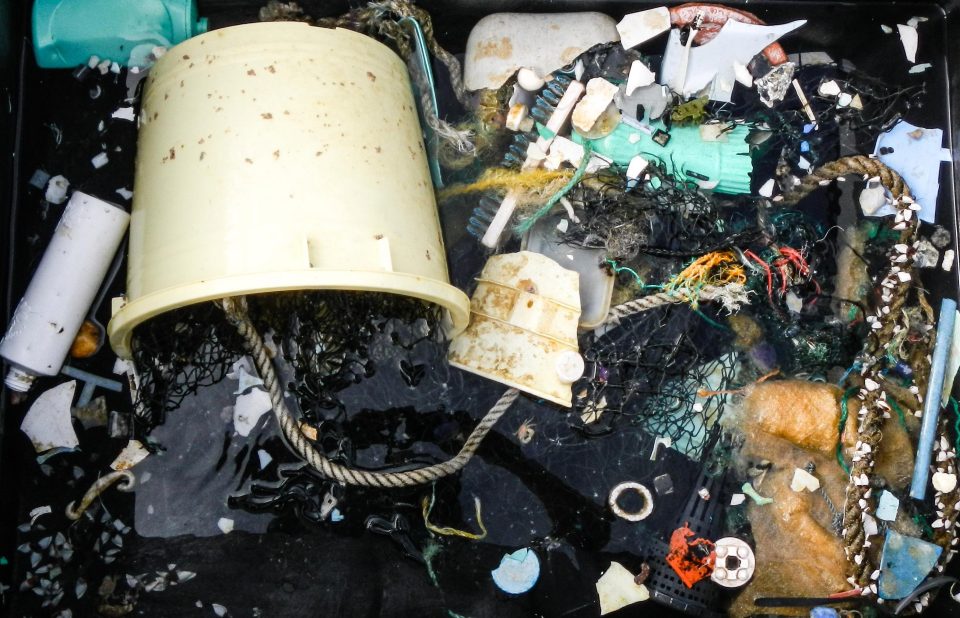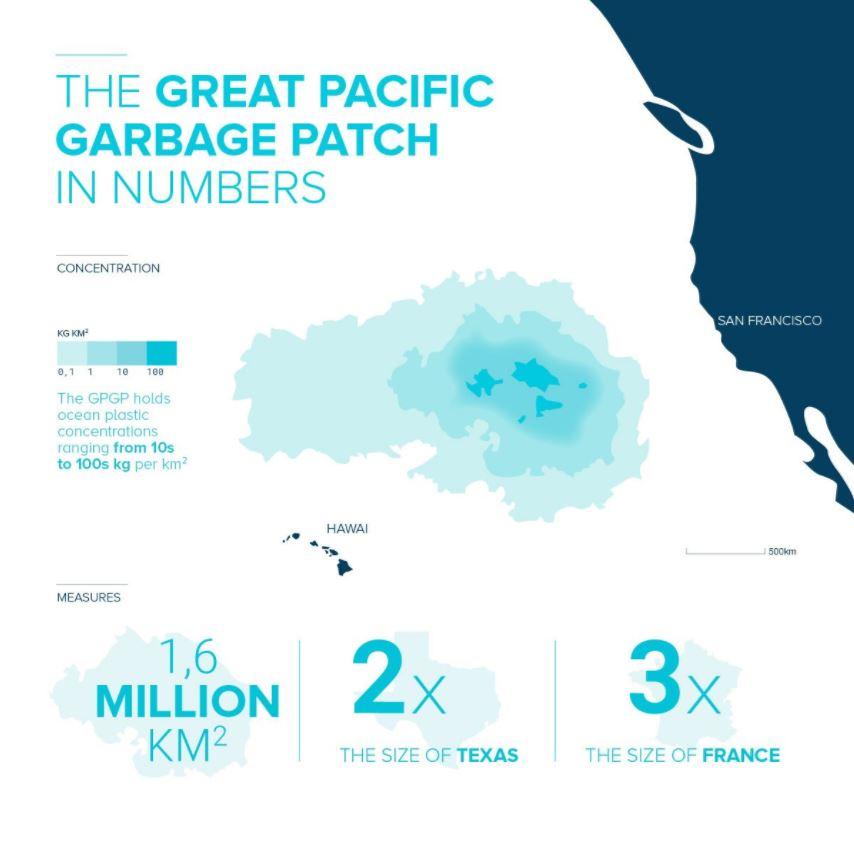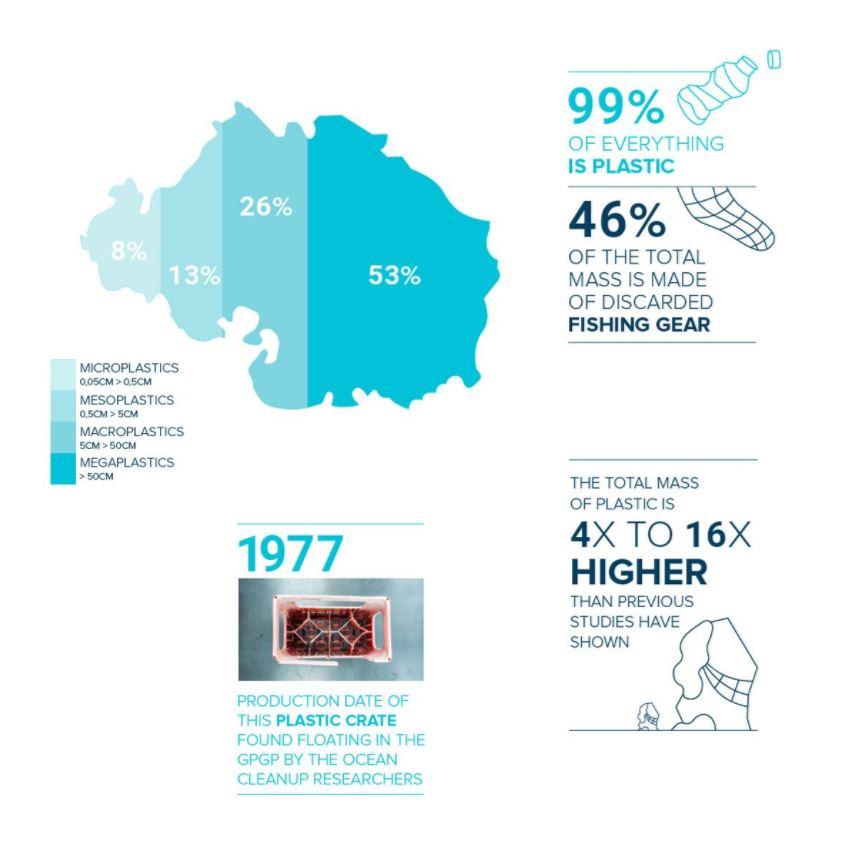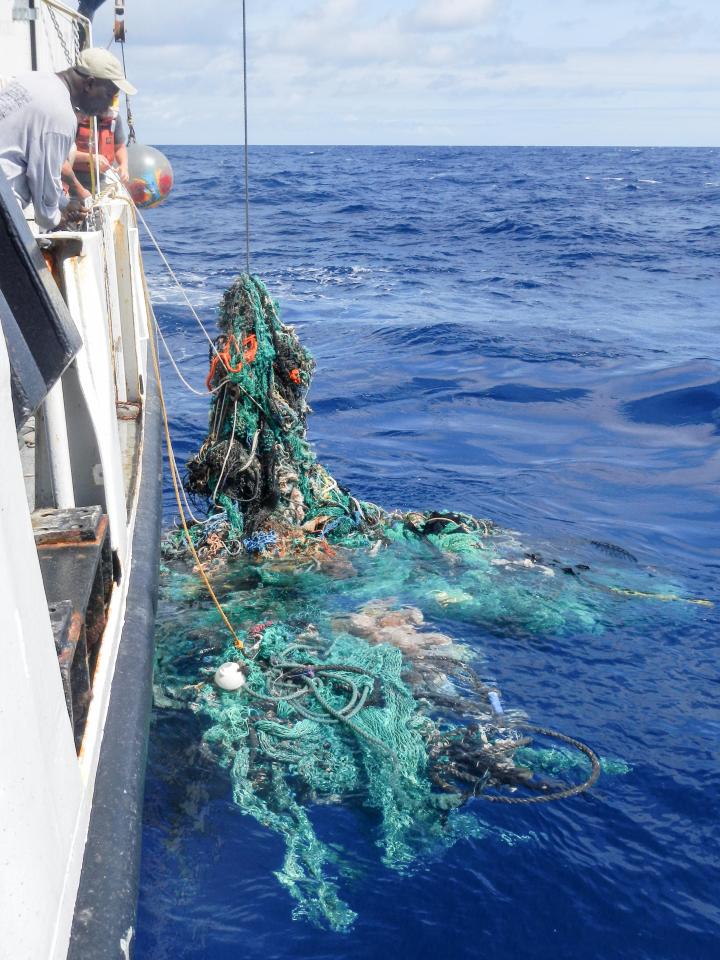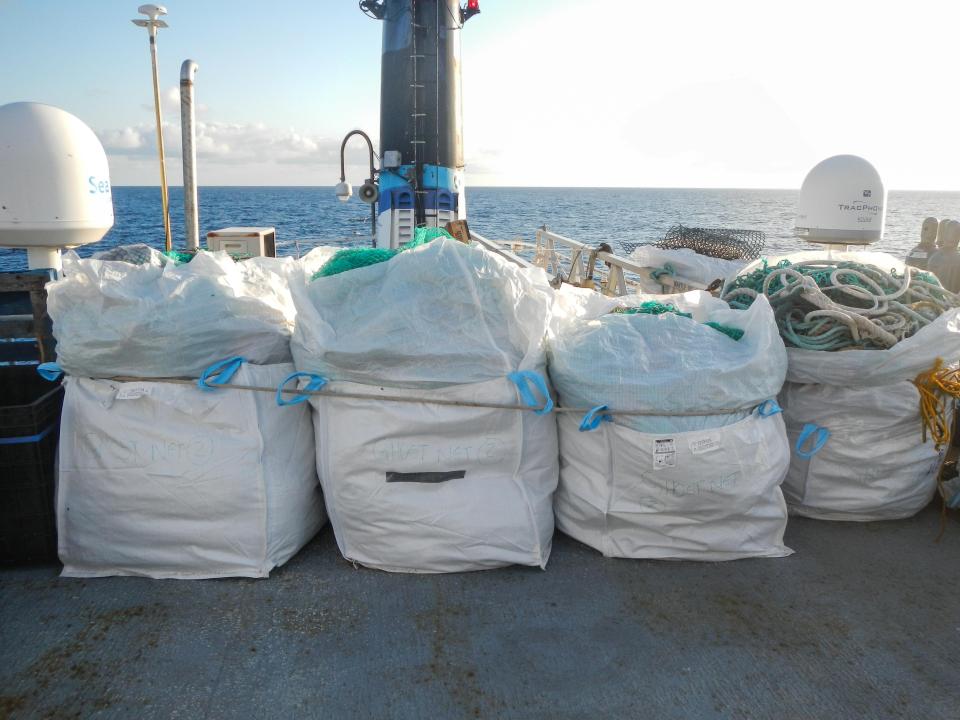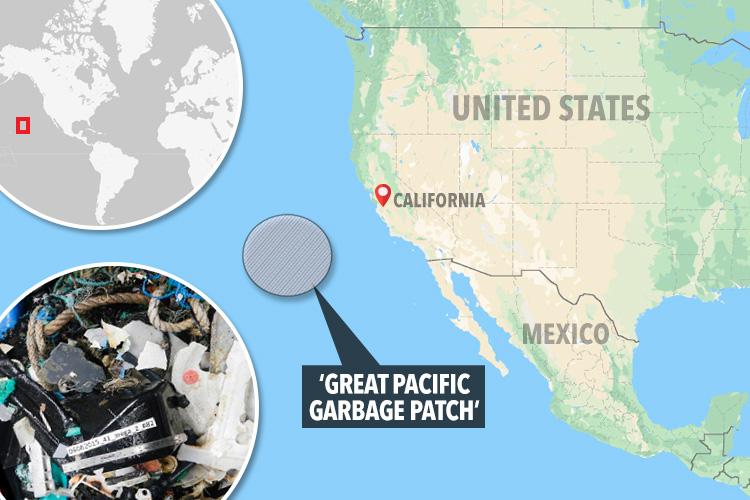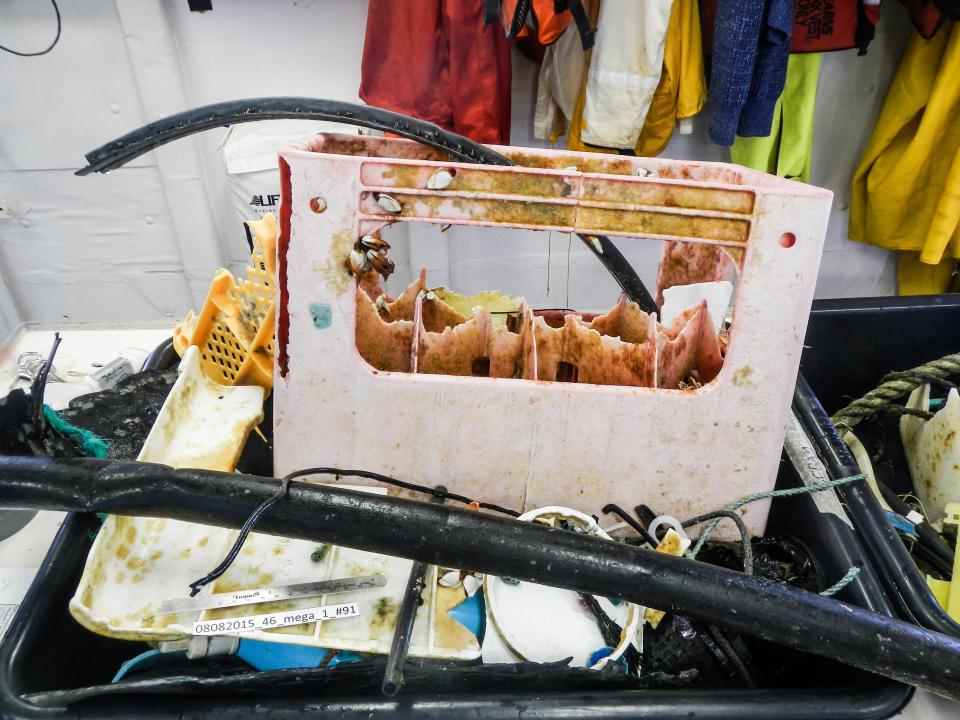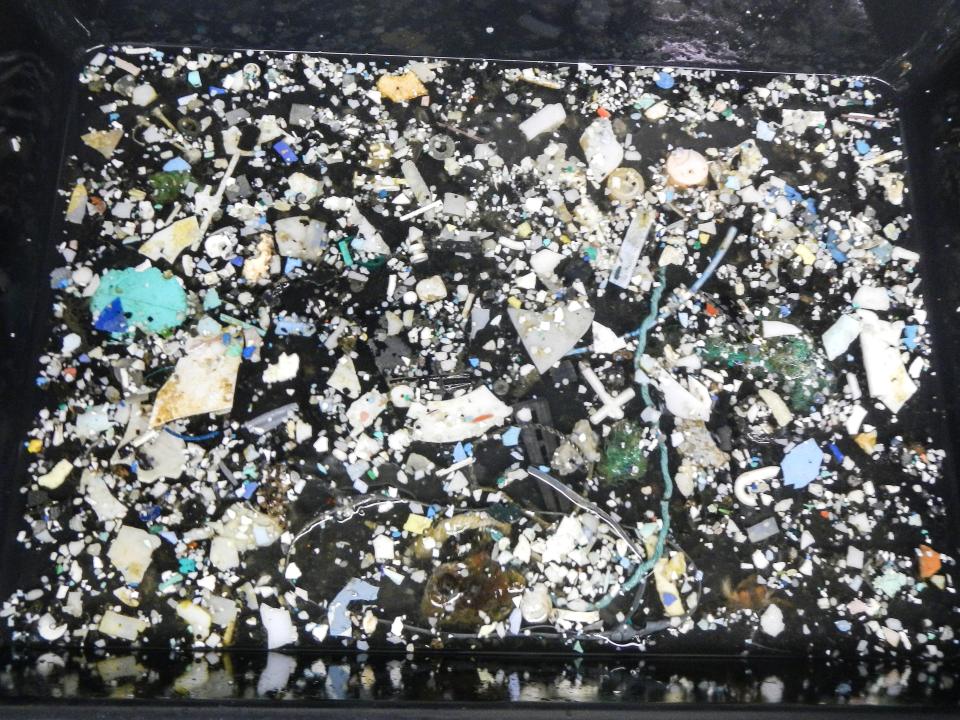‘Great Pacific garbage patch’ is bigger than France, Germany and Spain COMBINED – and growing at rapid rate
The 'gyre' is made up of bottles, containers, fishing nets and micro-particles which harm animals

AN enormous floating dump of plastic waste in the Pacific ocean is now bigger than France, Germany and Spain combined.
It is growing rapidly, as more and more rubbish joins the 80,000 tonnes already ominously swirling in the water.
A study published in the journal Scientific Reports paints a terrifying picture of what is being dubbed as the Great Pacific Garbage Patch.
The "gyre" - made up of bottles, containers, fishing nets and micro-particles - weighs as much as 500 jumbo jets.
Experts say around 1.8trillion pieces of plastic have now gathered between Hawaii and California in recent years.
Researchers who studied more than 600,000 square miles of the ocean say it accumulated into one titanic mass because of the currents.
One item pulled from the patch was 40-years-old, owing to the fact that plastic, a petroleum-based product, disintegrates very slowly.
Plastic also harms marine life, killing creatures such as turtles and dolphins who ingest it, and humans by entering the food chain in the form of microplastics.
"We're basically poisoning our own food, especially for those of us relying on fish for our diet," said Joost Dubois of the Netherlands-based Ocean Cleanup Foundation.
Although all elements of rubbish are dangerous for humans and sealife, microplastics are especially worrying for scientists, as the tiny fragments of plastic can enter the food chain when eaten by fish.
The pollutants in the small fragments then become more concentrated as they move up to top level predators through the food chain.
Laurent Lebreton, lead author of the study, said: "The inflow of plastic to the patch continues to exceed the outflow.
"People look at the quantity of fishing gear (in the patch), and point a finger at the fishing industry, but then again they’re eating the fish too.
"It’s not so much this or that sector or region, it’s the way we consume and live -- single-use plastics, throwaway society.
"We need to take some serious action on that front. We'll solve this problem on a global scale."
It comes as seafood lovers were warned that they eat 11,000 pieces of toxic plastic every year.
Last year we reported how scientists spotted yet another collection of marine debris - and they reckoned it's four times the size of Britain or the same size as Mexico.
MOST READ IN NEWS
Nestled between Chile and Easter Island in the South Pacific, the patch is a collection of small plastic fragments that are tricky to spot with the naked eye.
Five gyres are known to exist in our oceans, of which the North Pacific Gyre - where a garbage patch was first spotted - is the largest.
Last year, almost 200 nations signed a United Nations resolution to eliminate plastic pollution in the sea - a move some hope will pave the way to a legally binding treaty.
We pay for your stories! Do you have a story for The Sun Online news team? Email us at tips@the-sun.co.uk or call 0207 782 4368. You can WhatsApp us on 07810 791 502. We pay for videos too. Click here to upload yours.


